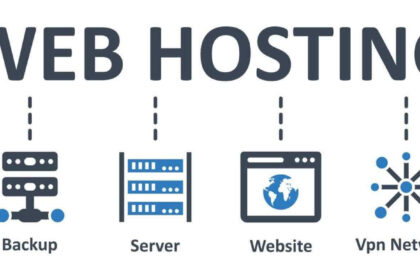The mushroom industry harbors vast untapped opportunities for budding entrepreneurs. With increasing demand across multiple sectors, starting a mushroom cultivation business can prove highly lucrative. This comprehensive guide aims to highlight the viability and profitability of entering the mushroom market.
We will delve into the advantages of mushroom cultivation, explore different approaches to launching a business, and provide practical insights to help you thrive in this prosperous industry.
Contents
1. Discovering Lucrative Opportunities in the Mushroom Industry
Mushrooms are experiencing a surge in demand, driven by their versatility and nutritional value. Restaurants, grocery stores, health and wellness industries, and even pharmaceutical companies are incorporating mushrooms into their products. This widespread demand creates a multitude of opportunities for mushroom growers to establish thriving businesses.
The mushroom market offers significant profit potential and prospects for growth, making it an enticing industry for aspiring entrepreneurs. Moreover, mushroom cultivation boasts low startup costs and high yield potential, further adding to its appeal.
2. Choosing Your Path: Simplified, Intermediate, or Advanced Approaches
When venturing into mushroom cultivation, you have the flexibility to choose from different approaches based on your resources, time commitment, and goals. Let’s take a detailed look at each method:
The Simplified Approach: Constructing A Fruiting Chamber
The easiest way to embark on a mushroom cultivation business is by constructing a fruiting chamber. This specially designed space provides the optimal environment for mushroom growth, encompassing controlled temperature, humidity, and lighting conditions. By procuring ready-to-fruit blocks, which come pre-inoculated with mushroom mycelium, you can bypass the labor-intensive process of substrate preparation.
Simply place these blocks in the fruiting chamber, and within a few days, you’ll witness the growth of mushrooms ready for harvest. While this method requires minimal setup and is less time-consuming, it may yield comparatively lower profits than the other approaches.
The Intermediate Approach: Establishing A Preparation Area, Laboratory, And Incubation Space
For individuals seeking greater control over the cultivation process and higher profitability, the intermediate approach provides an excellent choice. This method involves setting up a dedicated preparation area, a laboratory for inoculation, and a designated incubation space. In the preparation area, you’ll mix the mushroom substrate, such as soy hulls and softwood fuel pellets, to create an ideal growing medium. These substrates then undergo a sterilization process to eliminate contaminants. In the laboratory, you’ll inoculate the sterilized substrates with mushroom spawn, which kickstarts the growth of mycelium.
The incubation space provides the necessary conditions for mycelium to thrive. Once the mycelium has fully colonized the substrate, it is transferred to the fruiting chamber, where mushrooms begin to develop. The intermediate method requires more labor and setup, but it offers significantly higher profit potential.
The Advanced Approach: Producing Your Own Spawn
The most comprehensive method for starting a successful mushroom cultivation business involves producing your own spawn. Spawn serves as the primary inoculant for mushroom cultivation. While this approach demands additional equipment and expertise, it also offers numerous advantages. By controlling the entire spawn production process, you ensure consistently high-quality results.
Additionally, producing your own spawn yields long-term cost savings, particularly if you plan to expand your operations. However, it is important to note that producing spawn can be challenging and time-consuming. Alternatively, reputable spawn providers are available in the market if you prefer not to produce it yourself.
Step-By-Step Guide To Building A Flourishing Mushroom Cultivation Business
To assist you in your journey toward success, let’s delve into a step-by-step guide for each method:
1. The Simplified Approach: Constructing A Fruiting Chamber
1. Choose an appropriate location for your fruiting chamber.
2. Construct the chamber using suitable materials, ensuring proper ventilation.
3. Install LED lights, ventilation systems, and a humidifier to maintain optimal growing conditions.
4. Source ready-to-fruit blocks from reputable suppliers.
5. Place the blocks in the fruiting chamber and monitor the necessary conditions for mushroom growth.
6. Harvest the mature mushrooms when they reach the desired size and appearance.
2. The Intermediate Approach: Establishing A Preparation Area, Laboratory, And Incubation Space
1. Allocate space for a dedicated preparation area, laboratory, and incubation space.
2. Prepare the substrates by meticulously mixing ingredients, such as soy hulls and softwood fuel pellets.
3. Sterilize the substrates using a sterilizer or pressure cooker to eliminate contaminants.
4. In the laboratory, inoculate the sterilized substrates with mushroom spawn.
5. Transfer the inoculated substrates to the incubation space and maintain the appropriate temperature and humidity levels.
6. Once the mycelium has fully colonized the substrate, move the blocks to the fruiting chamber.
7. Provide the necessary conditions in the fruiting chamber to facilitate mushroom formation.
8. Harvest the mature mushrooms and repeat the process for subsequent batches.
3. The Advanced Approach: Producing Your Own Spawn
1. Acquire the necessary equipment, such as an autoclave, pressure cooker, and laminar flow hood.
2. Select a suitable mushroom species for spawn production.
3. Prepare a nutrient-rich medium for mycelium growth.
4. Sterilize the medium using an autoclave to ensure a sterile environment.
5. Inoculate the sterilized medium with a pure culture of the desired mushroom species.
6. Incubate the inoculated medium until the mycelium fully colonizes it.
7. Harvest the mature mycelium and store it in a suitable container or use it to inoculate substrates for fruiting.
Expanding Operations And Ensuring Long-Term Success

As your mushroom cultivation business flourishes, consider implementing the following strategies to scale up operations and ensure long-term success:
1. Effective Marketing And Promotion
1. Identify your target market and develop comprehensive marketing strategies to reach potential customers.
2. Leverage online platforms, social media channels, and local networks to promote your mushroom products.
3. Emphasize the unique qualities and benefits of your mushrooms to stand out in the market.
2. Quality Control And Consistent Supply
1. Establish stringent quality control measures to deliver superior mushrooms to customers.
2. Continuously monitor and maintain optimal growing conditions, including temperature, humidity, and ventilation.
3. Establish robust supply chains for sourcing substrates, spawn, and other essential materials.
4. Efficient Business Management:
5. Streamline operations, encompassing inventory management, record keeping, and financial tracking.
6. Foster innovation and diversification of product offerings to cater to evolving market demands.
7. Cultivate strong relationships with suppliers, customers, and industry professionals to expand your network.
Conclusion
Embarking on a mushroom cultivation business opens doors to tremendous profit potential. By comprehending the opportunities offered by the mushroom industry, selecting an appropriate approach, and following a meticulous step-by-step guide, you can establish a thriving and prosperous enterprise.
Whether you opt for the simplified, intermediate, or advanced method, success hinges on dedication, diligence, and a passion for cultivating this remarkable fungi. Take the first step toward transforming mushrooms into a profitable venture today.




